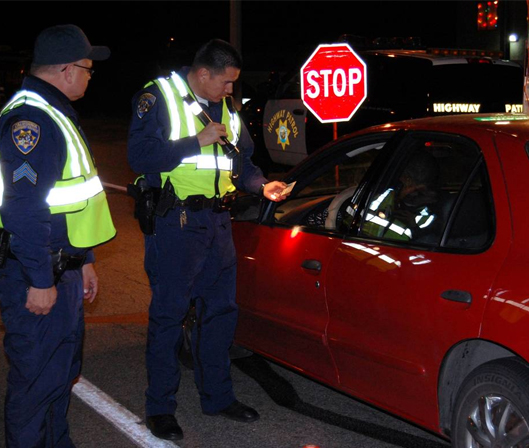
Aug 22, 2016 | Blog, Forfeiture, News
Westland — Marijuana and pizza may be a popular combination, but the state Court of Appeals ruled last week it isn’t enough to warrant police seizure of property.
The state appellate court overturned the forfeiture of a car after ruling the driver didn’t use the vehicle to buy marijuana found by police, but instead received the weed as a tip for delivering a pizza.
The 2-1 decision came down Thursday, a day after House Bill 4499, part of a seven-bill package seeking to reform the state’s forfeiture laws, was passed by the Michigan Senate, 38-0. The Michigan House of Representatives in June approved the measure 104-5.
The Westland case began with an April 2013 traffic stop, during which Westland police officer Robert Fruit found a gram of marijuana on the driver, Linda Ross.
“Linda worked as a delivery driver and had received the marijuana as a tip earlier in the day after delivering a pizza to a customer,” the State Court of Appeals decision said.
The 2007 Ford Focus was seized under civil forfeiture laws that allow authorities to confiscate property that’s used to commit crimes. Ross’ father, Steven Ross, hired attorney William Maze, who specializes in forfeiture cases, to fight the case.
“At a forfeiture trial, Fruit testified that Linda told him, upon her arrest, that she purchased the marijuana from a customer to whom she had delivered a pizza,” the appellate court decision said.
“However, Linda testified, and the trial court found credible, that she received the marijuana as a tip for delivering pizza and that she did not intend to go to the customer’s house in order to purchase the marijuana.”
Maze said: “The question in this case was, did she use the car to purchase marijuana? If not, then they can’t seize the car. Possession of a drug isn’t enough.”
While Wayne Circuit Judge Robert Colombo agreed with Maze’s contention that mere possession of marijuana isn’t enough to warrant a seizure, the judge ruled Ross’ vehicle was used for the purpose of receiving the drug, and, thus, subject to forfeiture.
Appellate judges Michael F. Gadola and Jane M. Beckering overturned the lower court’s decision, with Judge Kathleen Jenson dissenting.
“Despite Linda’s testimony that she sometimes received marijuana as a tip from various customers, there was no evidence that she expected to receive it on this particular occasion, that this particular customer had given her marijuana before, or that she was motivated to go to the customer’s house by anything other than a delivery call,” the appeals court said.
“According to plaintiff and the trial court’s perspective, the fact that ‘the car was used to receive marijuana’ because marijuana was placed into it established — on its own — that Linda used the vehicle for the purpose of receiving marijuana. By that logic, a vehicle would be subject to forfeiture in all cases of mere possession.”
Assistant Wayne County Prosecutor Maria Miller said: “We are in the process of determining whether we will appeal this or not.”
Westland police declined to comment.
Michigan police agencies seized $23.9 million last year from suspected drug traffickers, according to a Michigan State Police report released last month.
However, that figure is likely low, since 56 agencies failed to respond to a Government Asset Forfeiture Report Form. Of the agencies that did respond, 332 reported asset forfeitures and 298 reported none.
Police are not required to file an annual report with the state detailing their forfeitures, although the proposed laws, which are awaiting Gov. Rick Snyder’s signature, would make it mandatory.
Bill 4499 would increase the burden of proof required to forfeit property in drug and public nuisance cases. Instead of the current threshold of “preponderance of the evidence,” the law would require “clear and convincing” evidence that the forfeited property was used to commit a crime.”
George Hunter, The Detroit News 1:54 p.m. EDT October 13, 2015

Aug 19, 2016 | Blog, News
MEMORANDUM FOR THE ACTING DIRECTOR
FEDERAL BUREAU OF PRISONS
Deputy Attorney General Sally Yates instructed officials in a memo Thursday to either decline to renew the contracts for private prison operators when they expire or substantially reduce the contracts scope. The goal, Yates wrote, is reducing and ultimately ending our use of privately operated prisons.
Between 1980 and 2013, the federal prison population increased by almost 800 percent, often at a far faster rate than the Federal Bureau of Prisons could accommodate. In an effort to manage the rising prison population, about a decade ago, the Bureau began contracting with privately operated correctional institutions to confine some federal inmates.
Since then, for the first time in decades, the federal prison population has begun to decline, from nearly 220,000 inmates in 2013 to fewer than 195,000 inmates today.
Private prisons served an important role during a difficult period, but time has shown that they compare poorly to our own Bureau facilities. They simply do not provide the same level of correctional services, programs, and resources; they do not save substantially on costs; and as noted in a recent report by the Department’s Office of Inspector General, they do not maintain the same level of safety and security. The rehabilitative services that the Bureau provides, such as educational programs and job training, have proved difficult to replicate and outsource-and these services are essential to reducing recidivism and improving public safety.
To Read The Memorandum Click The Link Below
MEMORANDUM FOR THE ACTING DIRECTOR FEDERAL BUREAU OF PRISONS

Aug 18, 2016 | Blog, Criminal Defense Attorney Michael Komorn, News
Attorney General Eric Holder’s speech regarding dropping mandatory minimums for many drug crimes is already making an impact.
Read the letter from the DOJ

Aug 8, 2016 | Blog, Criminal Defense Attorney Michael Komorn, News
CLIO (WJRT) – (04/25/16) – A Mid-Michigan marihuana dispensary is fighting the Genesee County Prosecutor’s office in court after FANG shut them down.
The owner of the Clio dispensary says warrants weren’t valid and he wants his business back open.
Attorneys from both sides were in Judge Hayman’s court Monday afternoon. The raid happened in January when the Genesee County Prosecutor’s office filed an emergency injunction to close down a facility called Clio Caregiver Connection.
A counter claim was filed against the Prosecutor’s Office, saying the county failed to meet legal requirements to participate with FANG.
The defense also argues that the recent dispensary raids and padlocking efforts by FANG were and are illegal.
“I don’t write the laws. I just enforce them. Dispensaries are not allowed. The word dispensary does not even appear in the medical marihuana act,” said Prosecuting Attorney David Leyton.
“There’s never been any complaints from anyone. He’s loved by all of the patients that’ve gone in there. They’re all unhappy that this was forced down. And it’s just an overreach by FANG,” said Clio Caregiver Connection Attorney Michael Komorn.
The case is in its early stages. Both sides will return to court to discuss it again on May 16.
*Marihuana is the correct spelling when referring to medical marihuana in the state of Michigan.
News Report Link
Updated: Tue 10:27 AM, Apr 26, 2016
By: Caresse Jackman – Email

Aug 7, 2016 | Blog, News
US police are using a flawed scientific test in drugs busts that gives ‘false positives’ to strongarm citizens into plea bargaining.
As if America’s highly-publicised “war on drugs” were not already facing a credibility gap, two US superior court judges – one in Washington, DC, another in Colorado – are raising questions about whether the federal Drug Enforcement Agency (DEA) and police departments are using “pseudo-scientific” drug identification methods to bust hundreds of thousands of suspected drug users, many of them inner-city minority kids. A flawed drug test means that innocent people are being locked up as suspects, deprived of their due process rights, and then pressured to accept plea bargains, whether they’re guilty or not.
At issue in the growing controversy is whether current drug identification methods, including the widely-used “Duquenois-Levine test“, can verify – and how accurately – that the substance police seize during an arrest is the one they say it is. The test, a variation on simple techniques first employed in the 1930s, exposes the suspect substance to a liquid chemical, and if it turns a certain colour – purple, in the case of marijuana – it’s deemed likely to be the real thing.
But according to leading defence experts, including Heather Harris, a highly-trained chemist who’s gone head-to-head with DEA lab “experts” and won, there are hundreds of legal substances, many of them readily available commercially, or in nature, that would normally turn purple under the exact same test conditions. Which means the Duquenois test, while ruling marijuana “in” as one theoretical possibility, perhaps, can’t confirm its presence, either – at least, not “beyond a reasonable doubt”, the legal threshold required for a conviction.
But that hasn’t stopped police from using the test widely. In one recent case in Florida, police descended on a middle-aged woman bird-watcher in a public park and busted her after noticing a leafy substance in a package in her purse, which later turned out to be sage she’d purchased as incense for her home. The woman tried to inform the police about sage’s medicinal and spiritual uses, and even Googled the manufacturer’s website on her laptop, which matched the branding on the package. But the police busted her anyway, after the substance turned purple in a lab test. She’s now planning to sue for damages.
In fact, the problem of “false positives” in drug tests isn’t just limited to substances that appear to resemble marijuana. In Canada, the owners of a family-based chocolatier business were fingered as dangerous drug dealers by a Duquenois field test, and found themselves in jail.
The chocolate case may seem extreme but it’s happening all across America, experts say. That’s, in part, because of the pay incentives involved. Police can earn large amounts of overtime pay by conducting routine drug busts, especially after hours; they even have a name for the practice: “collars for dollars”. In New York, where possession of less than an ounce of marijuana was decriminalised some years ago, marijuana drug busts have not declined; they’ve skyrocketed – from 5,000 to roughly 30,000 annually – in part, because police find the practice so lucrative.
Of course, Duquenois-Levine is not the only DEA-approved drug test available. A far more conclusive test, known as GC/MS, using far more advanced techniques, can also be performed, but defendants and even many lawyers are rarely aware that they can insist on such a test, or have much incentive to do so.
And, in fact, even the GC/MS test is increasingly under fire, because the DEA doesn’t have standard lab protocols to govern its use, and has angered judges, including those in Washington and Colorado, by overstating the test’s reliability in court. In one recent case, a Colorado superior court judge threw out all of the DEA’s testimony in a drug case after its witness, under cross-examination, failed to demonstrate that the GC/MS testing conducted at one of its 18 national labs was reliable. It’s a legal precedent that has the DEA reeling, experts say.
Of course, many people arrested for drug use and possession are undoubtedly guilty as charged – how many is unclear, though, because plea bargaining is so commonplace. But using manifestly flawed drug identification tests to charge defendants, or pressure them to plead guilty, is hard to square with a defendant’s right to due process. And the DEA and local police, by relying on such methods, are in danger of damaging even their “good” cases, making a further mockery of the “war on drugs”, while leaving ordinary citizens more at risk than ever.
Stewart J Lawrence and John Kelly
Thursday 4 August 2011 16.30 EDT
https://www.theguardian.com/commentisfree/cifamerica/2011/aug/04/marijuana-flawed-test

Aug 6, 2016 | Blog, Criminal Defense Attorney Michael Komorn, Marijuana Criminal Defense Attorney Michael Komorn, Michigan Medical Marijuana Act, News
What is the law?
The Michigan legislature has passed into law a one-year pilot program set up in five counties that allows for Michigan State Police to perform roadside drug tests. The way this will work is if a driver gets pulled over for a traffic offense, in one of the five counties that are yet to be determined and shows signs of being under the influence of drugs the specially trained “drug recognition expert” will be able to conduct a field sobriety test. After which, the officer will be able to use the new saliva-based testing to check and see whether the driver has consumed marijuana, heroin, or cocaine.
– Can you say DNA collection?-
What the purpose is?
The officials in charge of pushing through this policy cite the reasoning being that there has been a large increase recently of drugged driving accidents and drugged driving fatalities. The addition of this test to the already used field sobriety testing is intended as means to provide further probable cause to establish the grounds for a lawful arrest.
Additional arrests leads to additional fines and penalties that the police are able to collect from its citizens.
– Can you say More Money?-
What is the science behind this test?
https://www.aaafoundation.org/sites/default/files/EvaluationOfDriversInRelationToPerSeReport.pdf
In a study performed by AAA’s safety foundation, it was determined that it is impossible to set a blood-test threshold for THC. The test states:
There is no evidence from the data collected, particularly from the subjects assessed through the DRE exam, that any objective threshold exists that established impairment, based on THC concentrations measured in specimens collected from cannabis-positive subjects placed under arrest for impaired driving. An association between the presence and degree of indicators of impairment or effect from cannabis use were evident when comparing data from cannabis-positive and cannabis-negative subjects. However, when examining differences in performance in these parameters between subjects with high (>5 2 ng/mL) and low (<5 ng/mL) THC concentrations, minimal differences were found.
Setting any sort of legal limit or per se limit for cannabis and driving are arbitrary and unsupported by science.
Furthermore, in a study done by Forensic Fluids Laboratory the window of time during which a swab test can pick up a THC positive test is up to as long as 3 days. Even though someone may still have THC in their system 3 days after consuming Cannabis, the likelihood that they are still intoxicated is extremely unlikely.
As a result of the probable cause that can be gained from this swab test an officer has the ability to issue an arrest warrant based on evidence that is not providing any scientific proof of the driver current intoxication, but based on its result creates an extremely misleading affidavit.






